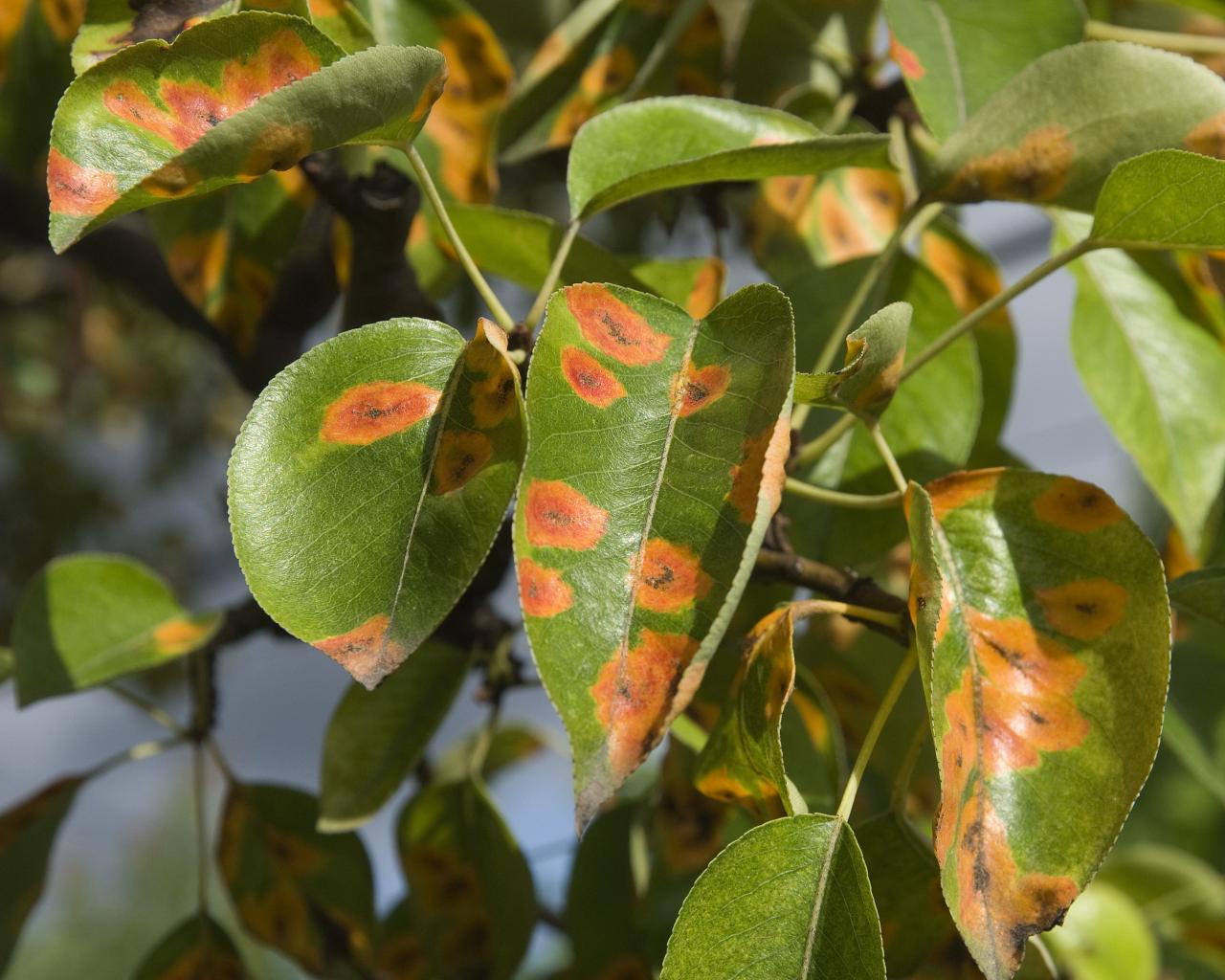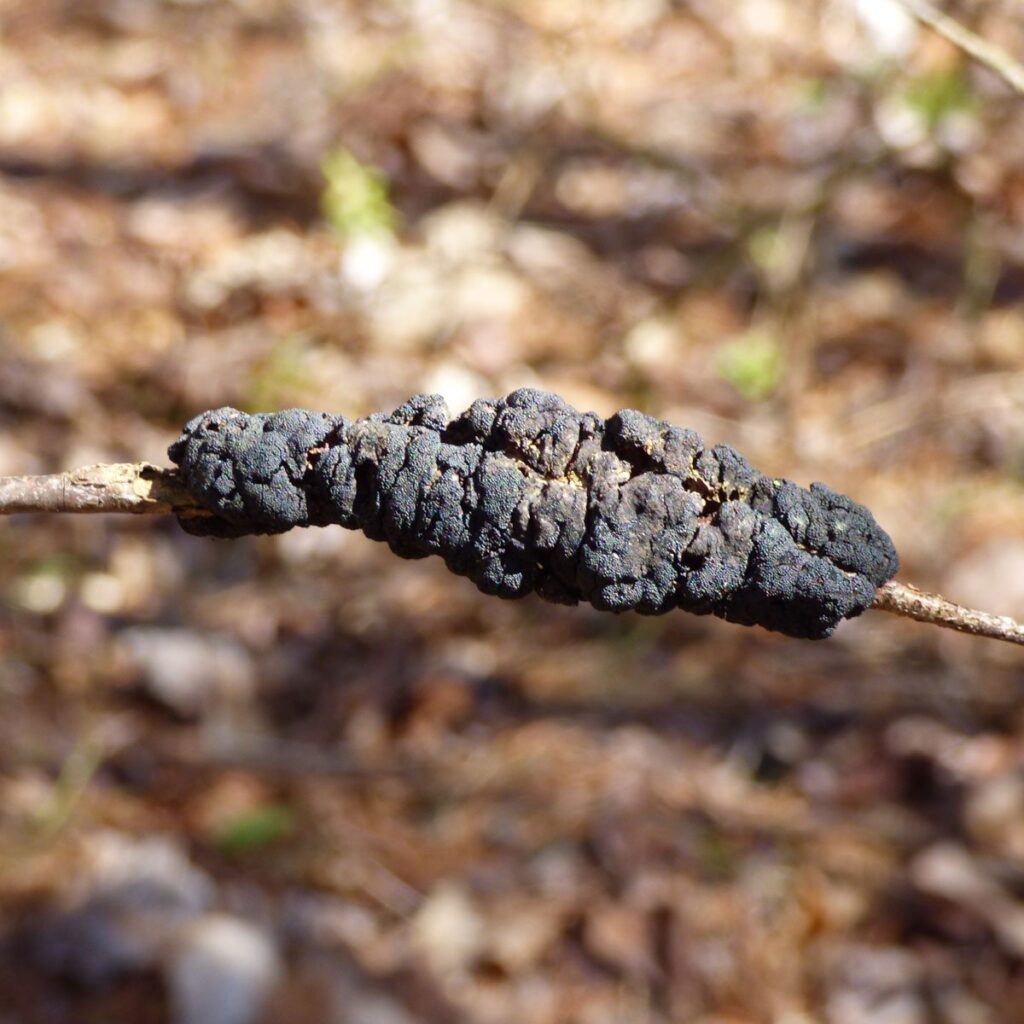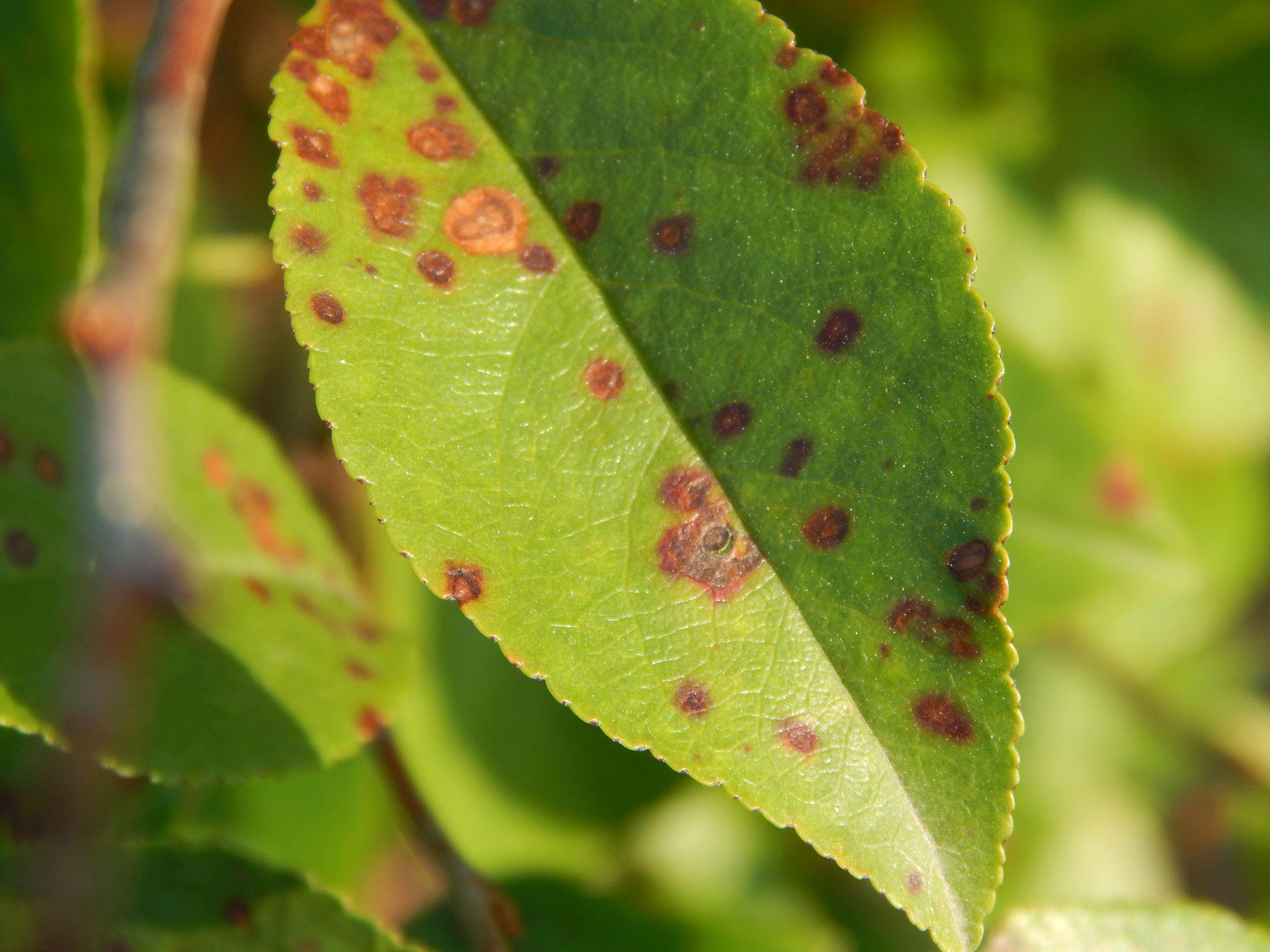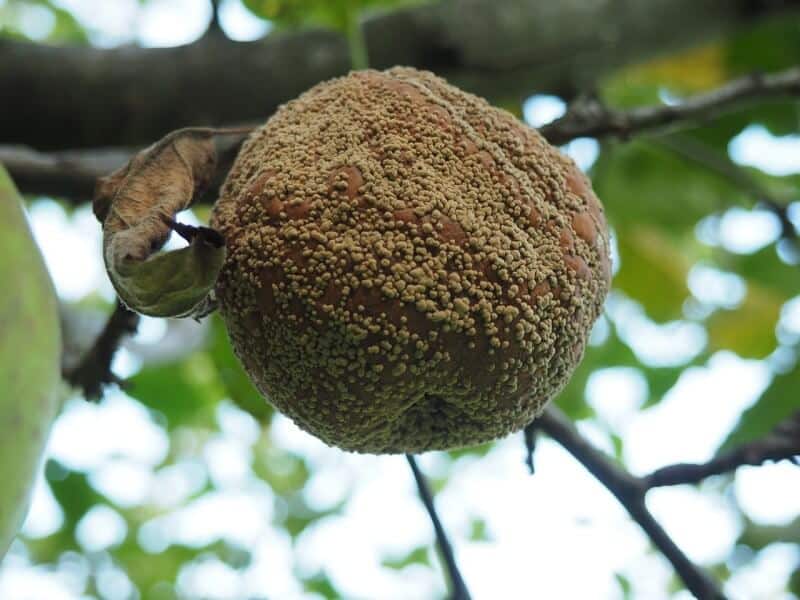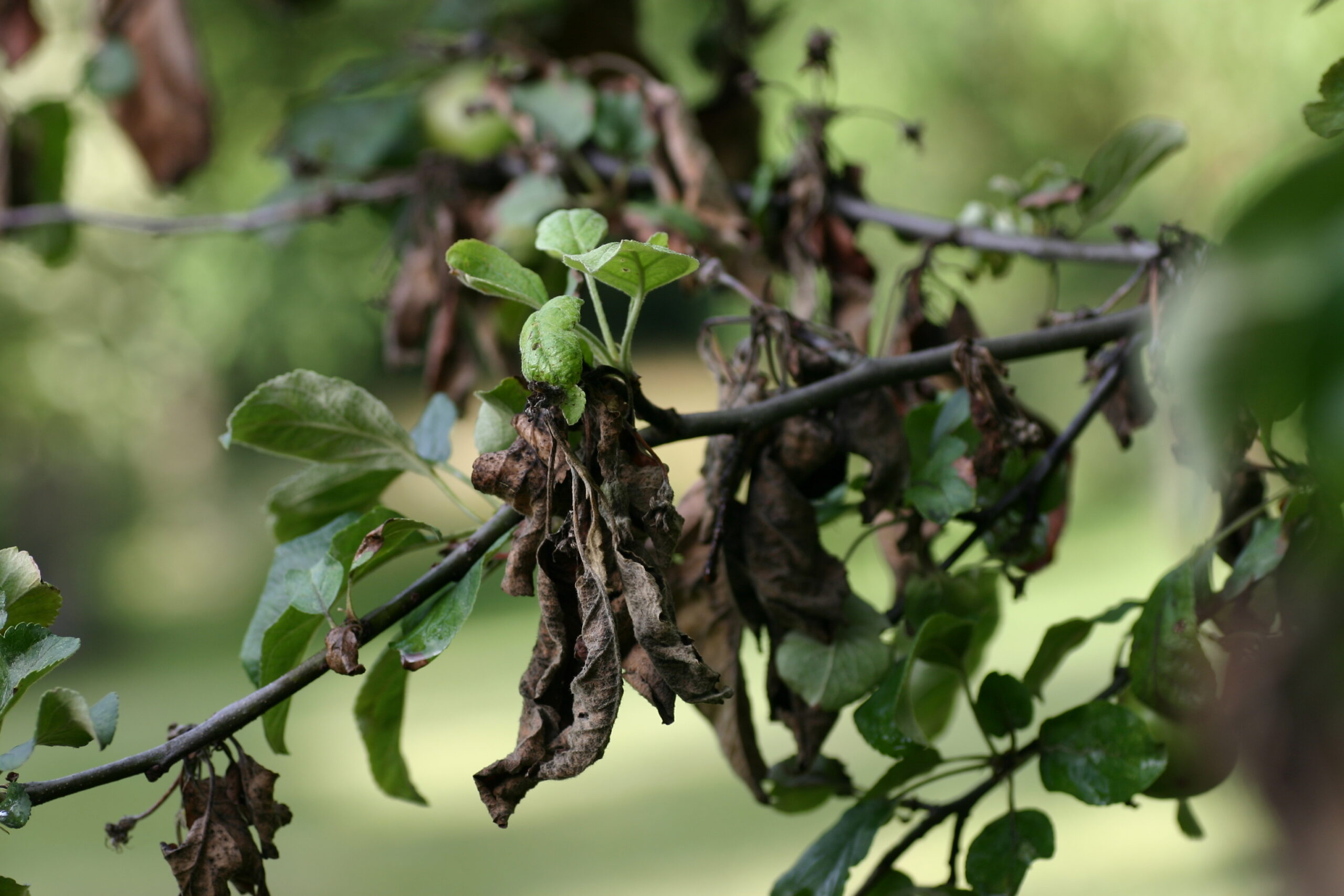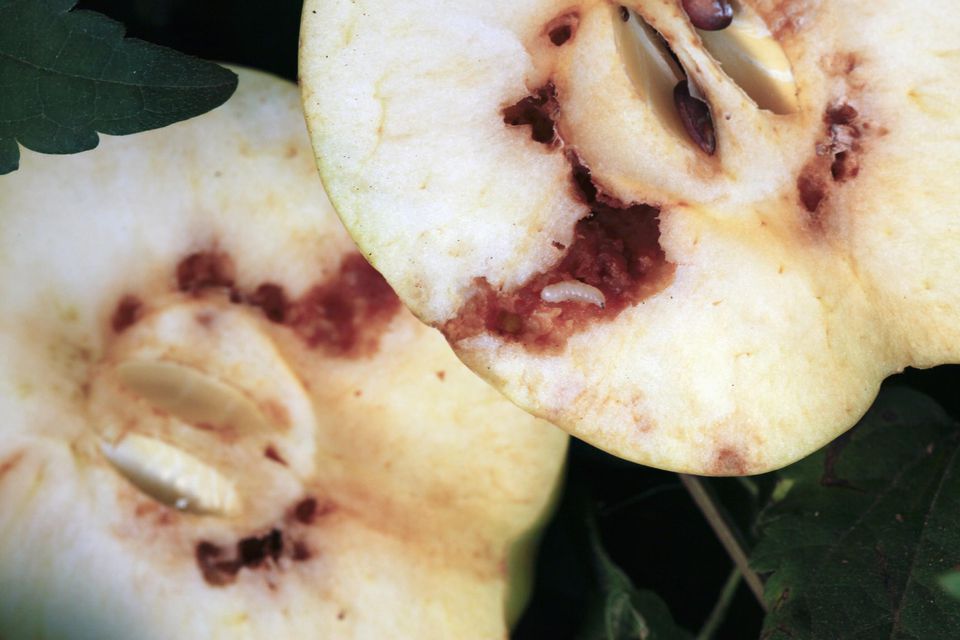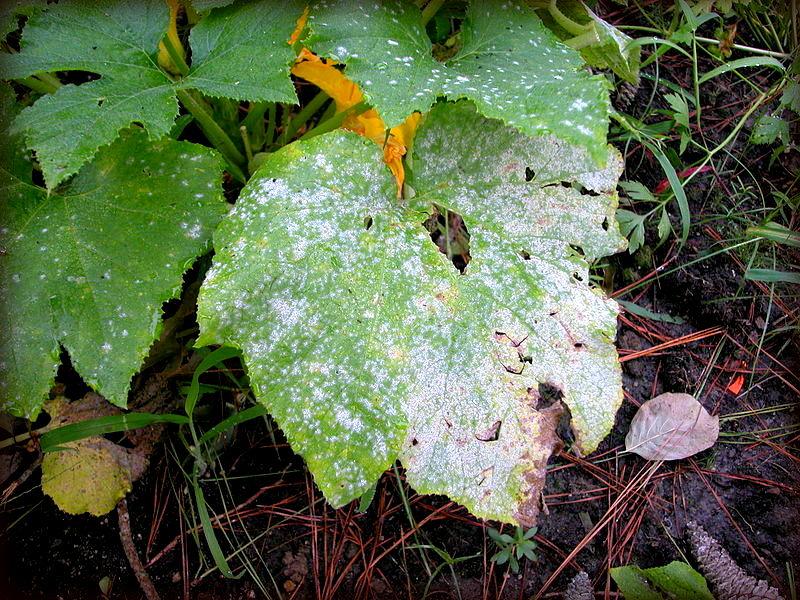Rust Spots
Rust disease is a fungal disease that affects a wide range of woody and herbaceous plants such as roses, hollyhocks, and daylilies. It appears just as rust wood on something like a bicycle, it leaves yellow/white spots on upper leaves, and has reddish-orange blisters on the undersides of leaves. Leaf distortion and defoliation may also occur. It is spread by the spores being carried by wind or water from an infected plant to a healthy plant, this is why typically it is spread after watering plants.
Cherry Leaf Spot
This disease can be very serious for sweet and sour cherries, it mainly affects the leaves but can also affect the fruit. This disease first appears as purple spots on the upper surface of the leaves, eventually the spots grow in size and turn brown, and after one month of being infected the leaves will die and fall off the tree. If defoliation continues to occur unevenly ripened fruit will occur along with reduced fruit growth and the eventual death of the tree.
Black Knot
Mainly attacking plum and cherry trees, black knot is a widespread fungal disease caused by the fungus Apiosporina morbosa. It is identified by a hard black gall that enwraps the twigs and branches of the tree. These galls strangle new growth, girdle branches and lead to poor fruit production. It is commonly spread on rainy days; the rain splashes the infected spores onto susceptible plant tissue. New infection typically occurs from April through June.
Brown Rot
Brown rot is a fungal disease caused by two fungi from the genus Monilinia, it most commonly infects peach, plum, cherry, apricot, and nectarine trees. Initially after infection brown spots will spread rapidly over the surface and light gray masses of spores will follow. The fruits will eventually dry and shrivel to form “mummies”. It can lead to a loss of 50% or more fruit prior to harvest and could even lead to a complete loss of crop on the tree.
Fire Blight
This extremely destructive disease for apple and pear trees is caused by the bacterium Erwinia amylovora. Usually appearing in spring, this bacterium will attack any part of the tree from the roots to the leaves. The leaves will rapidly wilt upon infection and the entire fruit growth will turn brown and die; the twigs will bend resembling a shepherd's crook. If a tree has a large amount of infected branches the tree will have an overall look of being burned by fire.
Powdery Mildew
Powdery mildew is a fungus disease that mostly impacts apple trees, it mostly affects Ginger Gold, Idared, Jonathan, Rome, Granny Smith, and Stayman apple trees. This fungus attacks the twigs, leaves, blossoms, and fruit and is spread very rapidly to quickly coat the entire leaf surface with powdery spores. The first symptoms are patches of fungus on the leaves, the leaves will also be wrinkled and curled. The terminals can be killed as a result and it is possible for no fruit to be produced either because of the infection.
Apple Maggots
This black and white fly starts out as headless, legless larva and is found in backyard trees and abandoned orchards. The maggots dig brown winding paths through the fruit.
Photos:
